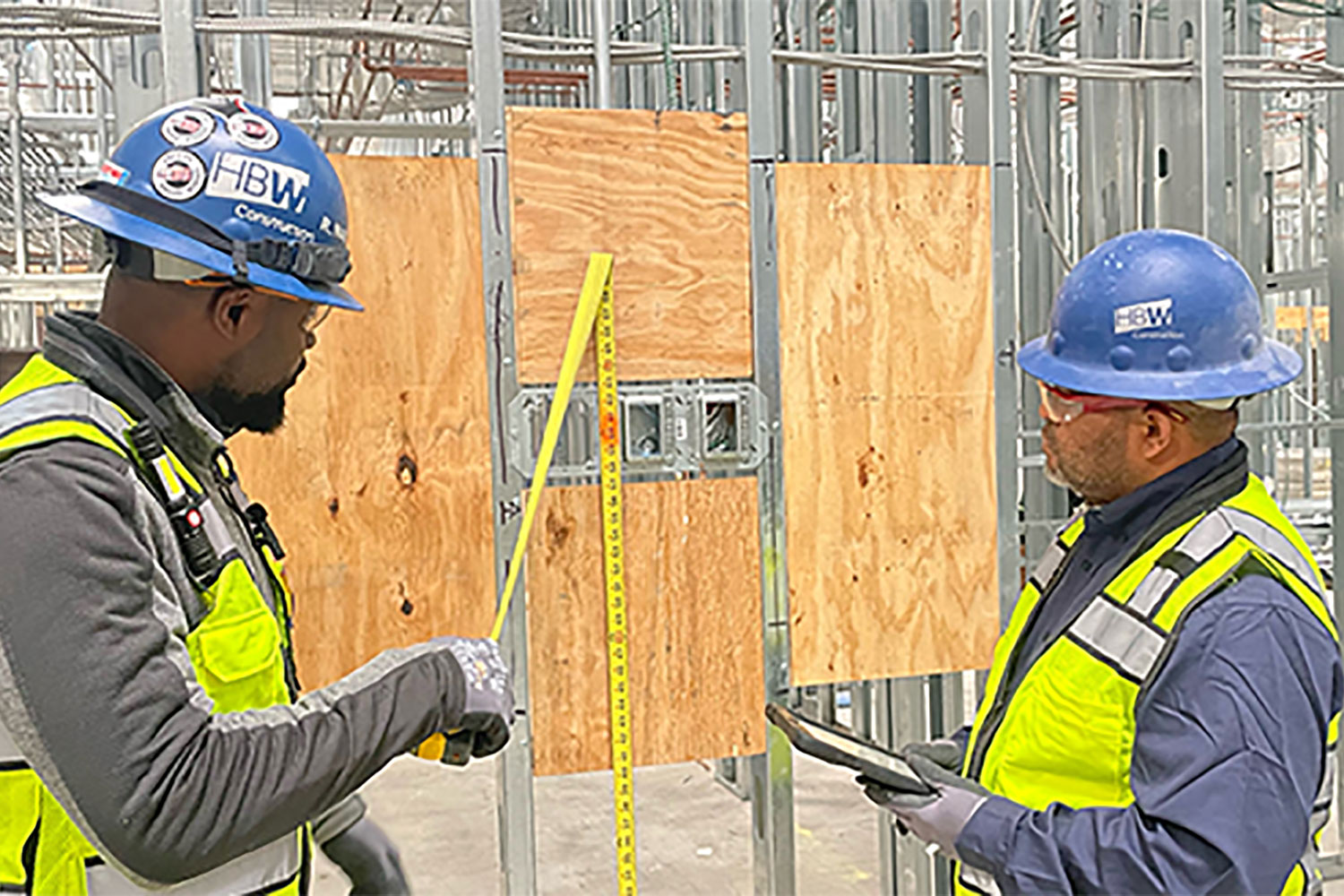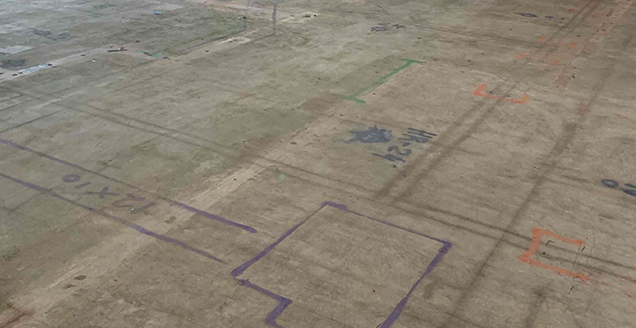Without this early collaboration, projects can encounter costly change orders and delays in the construction project schedule. Even with collaborative project partners, industry standards for layouts don't always account for the physical realities of a three-dimensional space.
With this in mind, HBW developed a more extensive layout process that essentially organizes each element of the project by color. We take extra time to plan the layout, and then our crews snap color-coded chalk lines on site to reveal a physical matrix of all the trades. This layout helps us to identify constructability issues within days of project start, and it also supports an understanding of design intent.
Supporting Design Intent and Alternate Solutions
A classic challenge for constructability is ceiling height. Modern designs favor high or exposed ceilings, and this leaves less space to integrate plumbing, electricity, HVAC, or other infrastructure within the ceiling cavity.
By laying out the various trades by color, we can balance the design intent for light fixtures or ceiling finishes with the layout of elements such as sprinkler systems and existing ductwork. This also allows HBW to review service access to all equipment on day one with the building's engineering team, rather than waiting until the end of a project.
A more detailed layout also smooths the process for helping clients choose alternate lighting, flooring, furniture placement / ordering of furniture or appliances much earlier in the project when necessary. The design team can help the client visualize the realities of the built environment before we build it.
The details in our layout have helped vendors select and order products earlier, giving them breathing room for longer lead times on manufacturing and shipping. If we can demonstrate the final dimensions of windows before they are installed, vendors can measure and order custom window treatments earlier in the project timeline.
Trend-Setting Layout Process Adopted by Project Partners
After experiencing the benefits of HBW's layout process for the construction project schedule (due to a more seamless flow between trades and fewer change orders), some of our architectural partners now require this layout as part of their approach on every project. Ultimately, taking extra time on the layout protects project partners — and the owner — from project delays. It does not delay project start, but it helps them avoid more expensive re-design or re-engineering in the future.
The layout process also helps superintendents. Training is relatively easy for new crew members, and we find that it supports strong subcontractor relationships. It requires less reference to plans because they are literally color-coded in the construction zone itself. Superintendents can also refer to the layout while walking the construction site because the project is reflected on the floor. This also helps the superintendents re-direct the sequencing of the project due to material lead-time issues. And when there are constructability challenges, our crews can devise solutions faster and bring better ideas to the architects and engineers.
When the general contractor, architects and engineers have more time and space to identify constructability conflicts before construction, everyone is happier and able to perform at their best.
[rl_gallery id="7709"]
Learn more about HBW’s job site management.



